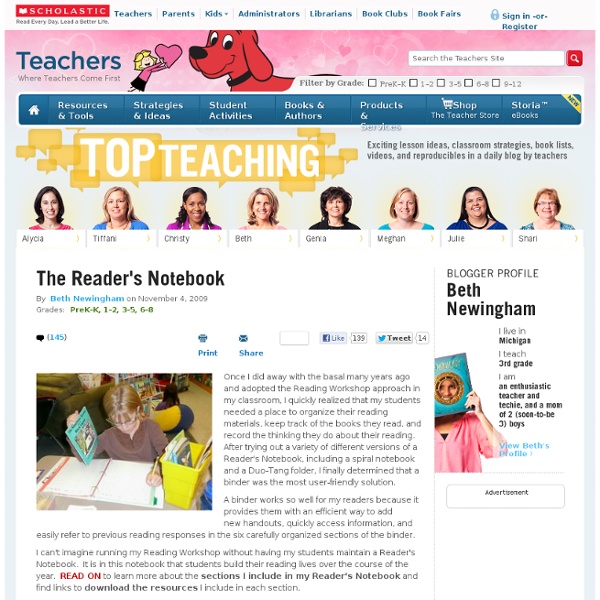



Literature Circle Models After experimenting for many years, I discovered an approach that's easy, fun, and effective. I refer to it as Classroom Book Clubs because it's a more relaxed method of doing Literature Circles that doesn't involve roles. You can view a narrated slidecast to this model by scrolling down to the Classroom Book Clubs section. On this page you can also learn about different types of Literature Circles. Ways to Structure Literature Circles Classroom Book Clubs - My favorite method at the moment is a flexible approach to Literature Circles that does not require the use of extensive handouts and assignment booklets. Classroom Book Clubs I love this model because it's a very flexible and fun approach. Mini Literature Circles (Using Leveled Readers) Are you required to use a basal reading program in your classroom? Assign 3 or 4 students to a leveled reader based on their reading level. Literature Circles with Roles Some students enjoy having roles within their Literature Circles.
Reading and Wriitng Notebook FAQ I just started reading The Cafe Book yesterday by The Sisters and I am already so excited to make some changes in my classroom because of it. You can bet that I will be doing some serious posting about it during the next month as I begin to launch it in my classroom. I got a really great email from Lindsay today and thought I would answer her questions on the blog about my reading and writing notebooks. The first question she asked was, "Do your kids have both reading and writing notebooks?" The notebook that I use in my classroom is a combined reading and writing notebook. The second question was, "Are they responsible for bringing the notebooks to class each day or do you house them in your room? I am lucky enough to have the capabilities to store the notebooks in my classroom. I do a mixture of both. As we rebuild our notebooks, I am planning on sharing more details about them with you all.
Collaborative Literature Circles Using edModo and iChat to jazz up Lit Circles into the 21st Century Welcome to our collaborate literature circles website. We used our cool new technology to twist literature circles into a new tech-ridden beast. Our objectives were to engage students in collaborative literature circles using sets of "Award Books", and engaging in high level investigation of these books using these tech tools. We are so excited about the project, that we are sharing all of it with you on this site. Contact info: 37 Ways Teachers Can Use Pinterest In The Classroom 37 Ways Teachers Can Use Pinterest In The Classroom There are a lot of great technology tools out there for teachers that can make it easier to connect with other educators, get ideas for classroom activities, and find inspiration. One of the newest and best of these online tools is Pinterest, which has quickly become a favorite among educators. Using online “pinboards” teachers can save everything from photos to blog posts in one easily accessible and usable place. Educators who are curious about Pinterest should sign up for an invitation today (it’s still invite only, but it doesn’t take long to get an invitation) and start creating their own amazing collections of pins. Not sure where to start? Pinterest is ideal for getting inspired on a wide range of topics. Get inspiration for decorating your classroom. You’ll find a wealth of lessons and ideas on Pinterest to look through. Swap lesson plans. Collaborate with other teachers and educators. Pinterest doesn’t have to be all business.